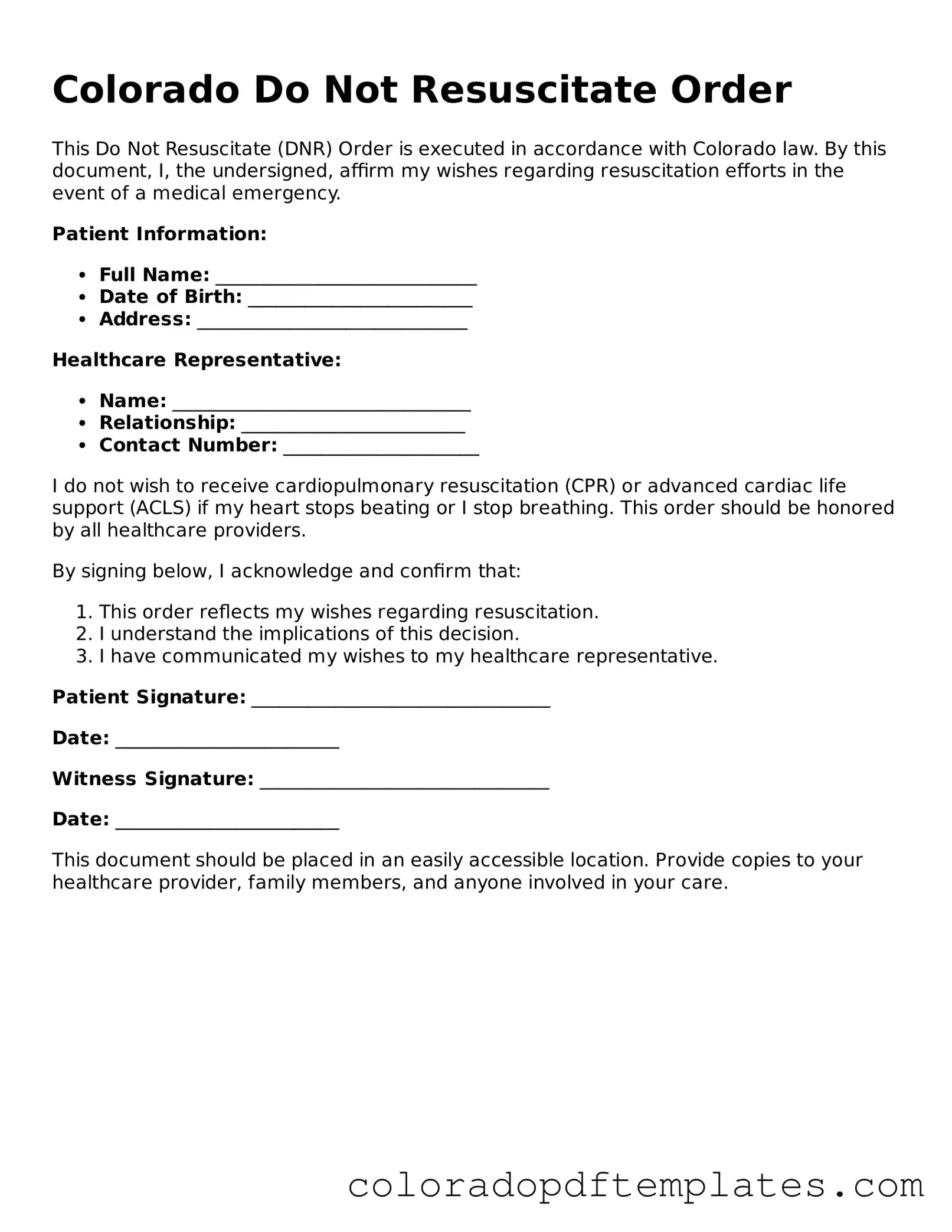A Colorado Do Not Resuscitate Order (DNR) form is a legal document that allows a person to refuse certain medical interventions, specifically cardiopulmonary resuscitation (CPR), in the event of a cardiac arrest or respiratory failure. This order is intended for individuals who wish to avoid life-saving measures in situations where they are not likely to recover. It is important for this document to be completed and signed by a qualified medical professional and the patient or their legal representative.
Who can create a DNR order in Colorado?
In Colorado, any competent adult can create a DNR order. This includes individuals who are at least 18 years old and are able to understand the implications of the decision. Additionally, a legal guardian or an authorized representative may create a DNR order on behalf of a person who is unable to make decisions due to incapacity. It is crucial that the individual understands their choices and the potential outcomes.
How is a DNR order implemented in Colorado?
To implement a DNR order in Colorado, the following steps should be taken:
-
The individual must discuss their wishes with a physician, who will provide guidance and ensure that the patient understands the implications of the order.
-
The physician will complete the DNR order form, which must be signed by both the physician and the patient or their authorized representative.
-
Once signed, the DNR order should be kept in an accessible location, such as with the patient’s medical records or on their person, to ensure that emergency medical personnel can easily find and honor it.
Can a DNR order be revoked?
Yes, a DNR order can be revoked at any time by the individual who created it. This can be done verbally or in writing. If a person decides to revoke their DNR order, they should inform their healthcare provider and ensure that any copies of the order are destroyed or marked as revoked. It is essential that medical personnel are aware of the revocation to avoid any confusion during a medical emergency.
What should individuals consider before completing a DNR order?
Before completing a DNR order, individuals should consider the following:
-
Their personal values and beliefs regarding end-of-life care.
-
The potential outcomes of a cardiac arrest and the likelihood of recovery.
-
Discussions with family members and healthcare providers to ensure that everyone understands the individual’s wishes.
-
The emotional and ethical implications of refusing resuscitation.
Taking the time to reflect on these factors can help individuals make informed decisions that align with their preferences and values.
